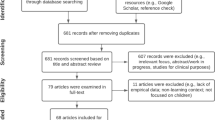Abstract
We propose a method using eye-gaze tracking technology and machine learning for the analysis of the reading section of the Scholastic Aptitude Test (SAT). An eye-gaze tracking device tracks where the reader is looking on the screen and provides the coordinates of the gaze. This collected data allows us to analyze the reading patterns of test takers and discover what features enable test takers to score higher. Using a machine learning approach, we found that the time spent on the passage at the beginning of the test (in minutes), number of times switching between the passage and the questions, and the total time spent doing the reading test (in minutes) have the greatest impact in distinguishing higher scores from lower scores.
Access this chapter
Tax calculation will be finalised at checkout
Purchases are for personal use only
Similar content being viewed by others
References
“New SAT Survey Press Release.” New SAT Survey Press Release, Public Relations The Princeton Review. The Princeton Review, Princeton Review
Ooms, K., Dupont, L., Lapon, L., Popelka, S.: Accuracy and precision of fixation locations recorded with the low-cost Eye Tribe tracker in different experimental set - ups. J. Eye Mov. Res. 8, 1–24 (2015). https://doi.org/10.16910/jemr.8.1.5
Vo, T., Mendis, B.S.U., Gedeon, T.: Gaze pattern and reading comprehension. In: Wong, K.W., Mendis, B.S.U., Bouzerdoum, A. (eds.) ICONIP 2010. LNCS, vol. 6444, pp. 124–131. Springer, Heidelberg (2010). https://doi.org/10.1007/978-3-642-17534-3_16
Andrew, H., Phong, N.: Open source software for analysis and correlation of reading patterns with superior SAT scores using gaze-tracking device. In: Proceedings of IETC Proceedings Book, pp. 50–56 (2017)
Khan Academy. https://www.khanacademy.org/mission/sat/exams
Author information
Authors and Affiliations
Corresponding author
Editor information
Editors and Affiliations
Rights and permissions
Copyright information
© 2018 Springer International Publishing AG, part of Springer Nature
About this paper
Cite this paper
Howe, A., Nguyen, P. (2018). SAT Reading Analysis Using Eye-Gaze Tracking Technology and Machine Learning. In: Nkambou, R., Azevedo, R., Vassileva, J. (eds) Intelligent Tutoring Systems. ITS 2018. Lecture Notes in Computer Science(), vol 10858. Springer, Cham. https://doi.org/10.1007/978-3-319-91464-0_36
Download citation
DOI: https://doi.org/10.1007/978-3-319-91464-0_36
Published:
Publisher Name: Springer, Cham
Print ISBN: 978-3-319-91463-3
Online ISBN: 978-3-319-91464-0
eBook Packages: Computer ScienceComputer Science (R0)




